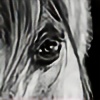HOME | DD
 octagonalstar — Survivors
octagonalstar — Survivors

Published: 2007-11-07 02:30:03 +0000 UTC; Views: 669; Favourites: 47; Downloads: 0
Redirect to original
Description
Cheyenne and her filly. This is my favorite photo of the two of them.




For those of you who haven't ready my journal, this is the mare that retained her afterbirth for at least 48 hours. She also foundered. But as you can see, she's looking well and is doing great.
Related content
Comments: 20

that was such a good photo with such a great perspective of it
glad to hear the mares fine and that foal is just so cute
👍: 0 ⏩: 0

ah, i haven't been following, but good to know they both survived. We had a mare who was not so lucky, but she had many more problems than this one.
best wishes to both
👍: 0 ⏩: 0

Great to hear she pulled through
Both her and the filly are gorgeous
Great capture!
👍: 0 ⏩: 0

Aw! Love the lighting and their positions. 
👍: 0 ⏩: 0

Such a beautiful pair 
👍: 0 ⏩: 0

Awww... what a beautiful shot. I'm so glad that both, mare and filly are doing great; especially for the mare... it's definitely a miracle that she survived.
👍: 0 ⏩: 0

I'm glad both of them are ok. I do have a question...what does Foundering mean? I'm not up to date on all the horse terms..
👍: 0 ⏩: 1

Courtesy of google:
Founder is a specific form of aseptic inflammation of the laminae (Fig. 1 - 7 a, b and c), in other words a “sudden foundering of the hoof (laminitis acuta). In this illness the aseptic inflammation will spread on the overweight/overstressed part of the laminae. It can affect one or all hoofs at the same time. This ailment usually appears suddenly with several causatives to trigger it. In some cases it comes after unusually hard work (traumatic founder) or due to errors in the diet (toxic founder), especially after feeding fresh grains (uncured), fresh (uncured) or moldy clover or hay, large doses of molasses (carbohydrates - sugars, starches) and overfeeding with feeds rich in proteins (albumin). Another known form of toxic founder is improper bedding (eating), like Black Walnut shavings and some Cherry wood, as well by ingesting other poisonous plants. Another reason for acute hoof-founder can be during or after serious infectious illnesses often accompanied with high fevers (pneumonia, phlegmon etc.) - (symptomatic founder). Also known is the founder after abortion, during the last stages of pregnancy and after delivery/foaling (laminitis peuperalis). The founder also appears in older stallions that are active in breeding, usually within three months after the end of breeding season, more likely due to improper adjustment of the diet and lack of exercise. Besides these "triggering" reasons there are other causes in which the hoof is subjected to unusual/severe strain/stress, such as other forms of aseptic inflammations of the laminae (serious case of gravel/abscess etc.).
👍: 0 ⏩: 1

Beautiful shot. So glad that both are doing so well.
👍: 0 ⏩: 0

I'm so glad they're both ok and that baby is my definition of a perfect paint!
👍: 0 ⏩: 0






























